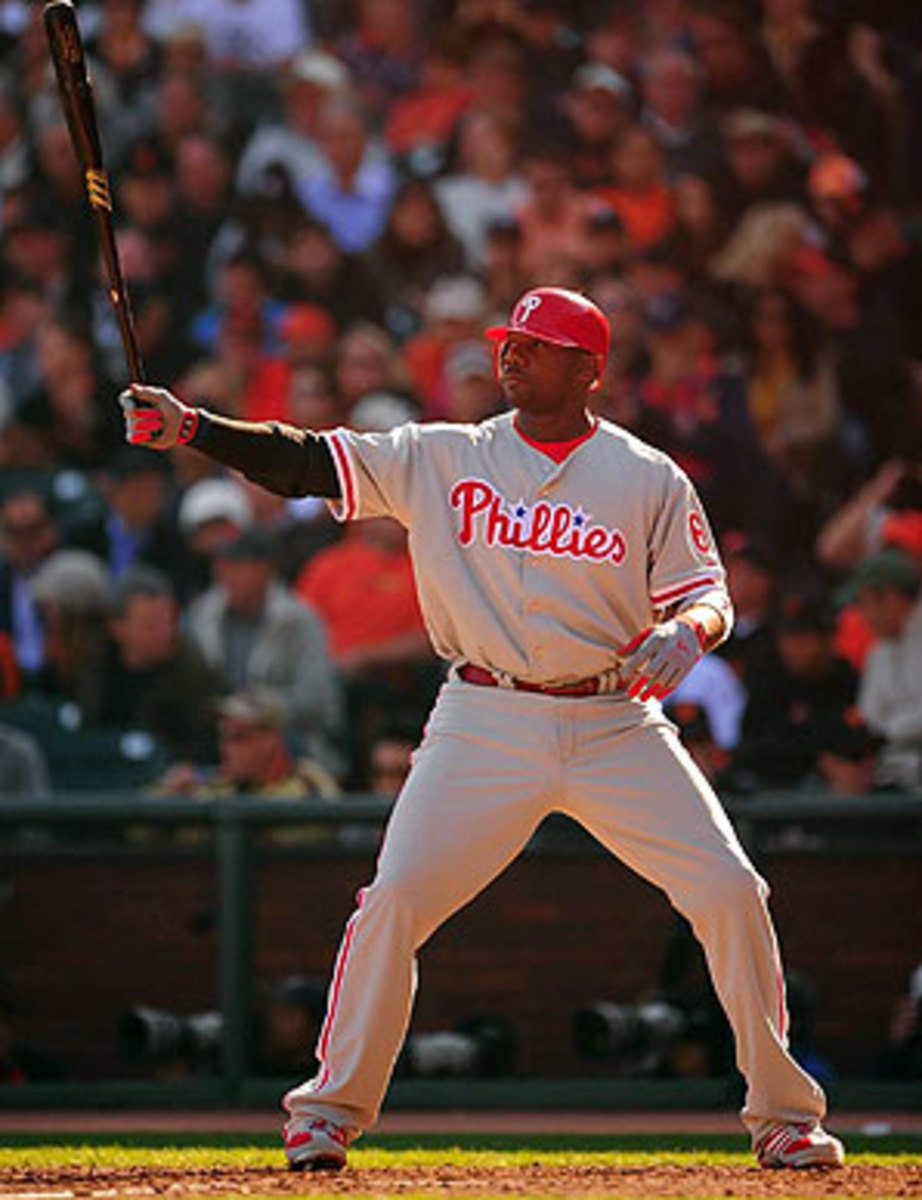Players like Bautista, Howard find imitation can be path to success
In July 2004 Red Sox first baseman Kevin Millar was mired in a slump when his club traveled to Seattle for a couple of games. There he saw Mariners catcher Miguel Olivo's open stance and hands held high and saw a resemblance of his own stance when he was hitting well.
"I was watching that Miguel Olivo hit and said, 'that's what I need to do,'" Millar told ESPN.com at the time. "And it worked. Some guys copy Barry Bonds or Albert Pujols. I copied Miguel Olivo."
In Millar's next five games, he had three or more hits in four of them, including six home runs, and he batted .336 with 17 doubles and 13 home runs over the final 65 games of the regular season, which the Red Sox capped off with their first World Series title since 1918.
The following May, however, the Sox and Mariners met again in Seattle, this time with Olivo mired in a 0-for-27 slump. Millar returned the favor and told Olivo to revert back to his old stance.
"I looked at some films and, yeah, he was right," Olivo said to the Seattle Times. "I had my feet closer together now and my hands down."
The next night Olivo had three hits, including his first homer of the year, as Seattle beat Boston 5-4. Perhaps Millar should have held his advice until after the series.
Though it's rare for baseball's imitation game to be such a closed circle of two players helping each other in turn -- more often it's players like the Pirates' Charlie Morton wanting to mimic an established star like the Phillies' Roy Halladay -- thievery is certainly not limited to the basepaths.
Though there's no truth to this report from The Onion, which, in all its satirical glory, wrote that all major leaguers started hitting more home runs when they adopted Albert Pujols' swing and stance, plenty more players have borrowed from others in the game and found much success.
Consider this smattering of other examples of baseball's imitation game:
Jose Bautista, Blue Jays RF
Bautista's rise from journeyman to slugger has been well documented, and so much of it began with a change to his swing. (Consistent playing time helped too.) Toronto hitting coach Dwayne Murphy spoke to Bautista in the team's weight room one day in 2009 and used the reflection of a mirrored wall to demonstrate a way to start his swing earlier. For a timing mechanism, Bautista adopted a high leg kick, reportedly mimicking Alex Rodriguez and others. He led the majors with 54 home runs last year and this year is tied with the Yankees' Curtis Granderson for the lead with 21.
And that's just spawning more imitators, as Justin Turner of the Mets is one example of a player who has reportedly looked to Bautista for an example.
Ryan Howard, Phillies 1B
Philadelphia's lefty slugger starts every plate appearance with his right arm outstretched and bat pointed toward the sky. If Howard looks just like former Phillie Jim Thome, there's a reason for that: both adopted the timing mechanism from Philadelphia manager Charlie Manuel, who also managed Thome in Cleveland. Howard was previously blocked at first base in the Phillies' organization by Thome, granting him plenty of time to see how it worked. Howard, of course, won the 2006 NL MVP and has averaged 46 home runs in the past five seasons.
The Cut-Fastball Crew
Everyone wants to be Mariano. The cut fastball or the cutter, as it's most commonly known, has been thrown for decades, though Yankees closer Mariano Rivera brought it to the mainstream when he used that single pitch of singular effectiveness in his own Hall of Fame career. As expertly documented by Albert Chen in a recent issue of SI, the cutter is baseball's new most prevalent copycat pitch.
Most of the Phillies' vaunted starting rotation now throws a cutter after Roy Halladay learned it from former Toronto pitching coach Gil Patterson and brought it with him in Philadelphia, where nearly one in four pitches thrown by a Phillies starter is a cutter. Among other examples: Many of the Rangers now throw the pitch, and Angels starter Dan Haren has said many of his teammates have asked him about learning the cutter too.
Javier Lopez, Giants LHP
San Francisco's dominant side-winding lefty specialist began his career as a very hittable over-the-top pitcher. In his first four years of pro ball from 1998 to 2001 Lopez never finished a minor league season with an ERA under 5.00. In Diamondbacks camp in spring 2002, he approached established lefty Mike Myers and asked for help in making the switch. Myers complied and Lopez made his major league debut a year later. In 2010 Lopez had a 1.42 ERA in 27 appearances for the Giants in the season's second half and allowed only one hit in 5 2/3 innings in helping the club win the World Series.
R.A. Dickey, Mets RHP
Dickey was about to fail out of baseball while working as a more traditional-style pitcher when he visited Hall of Fame knuckleballer Phil Niekro in winter 2008 for a tutorial on the pitch. Dickey already threw the knuckler but needed refining, so he went to learn the Niekro family trade and is a born-again pitcher. Dickey throws a hard knuckleball, much like Phil's brother Joe, a former All-Star. Dickey went 11-9 with a 2.84 ERA last year and is 3-7 with a 3.98 ERA this season.






